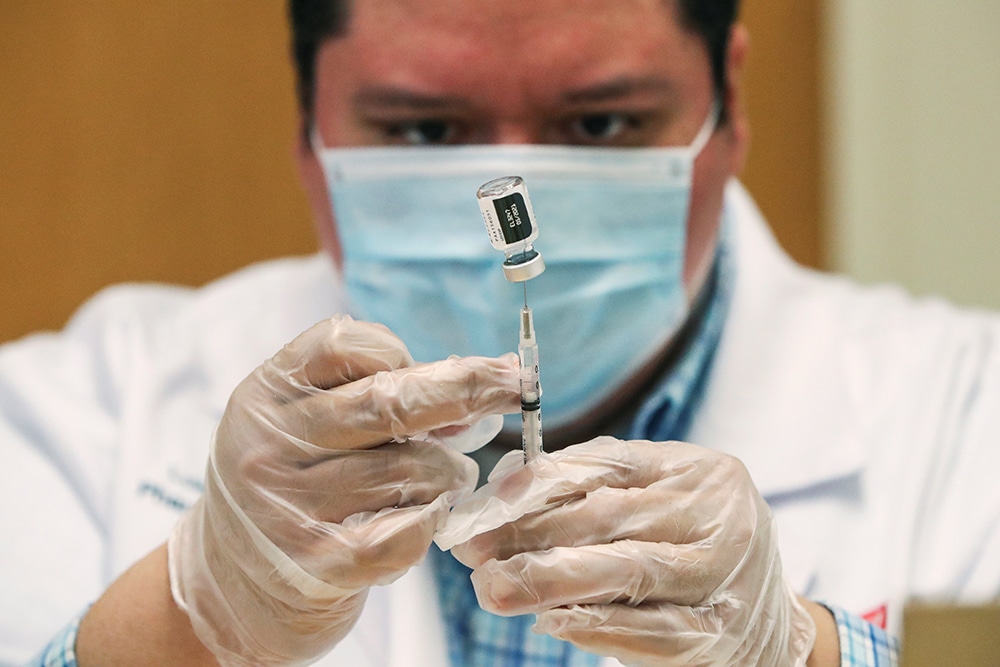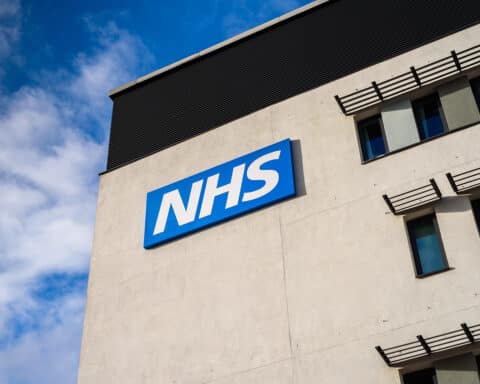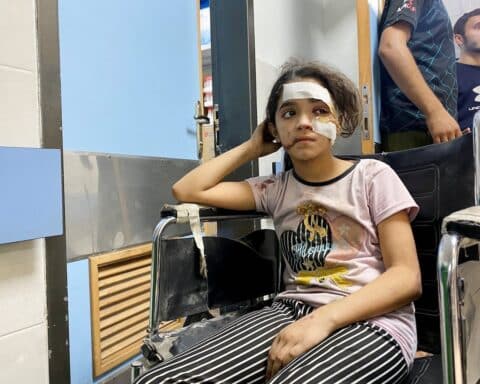There is good news to report regarding the progress of federal, state and local efforts in the United States to vaccinate the population against COVID-19. The progress in the United States rivals the best efforts in other countries.
As of April 12, the U.S. has administered more than 187 million doses of vaccine, and 22% of the population is fully vaccinated, while more than one-third of Americans have received at least one dose of a COVID vaccine. Only Israel (54%) and the Seychelles (39%) have more than a quarter of their populations fully vaccinated.
With 38 states having opened (or expected to open soon) vaccine appointments to those 16 and older, herd immunity is possible by the end of May, depending on the lag time to get vaccinated after making appointments. A wild card is whether vaccines will remain effective against variants, but so far, they have been effective, including a recent study of the Pfizer/BioNTech vaccine in South Africa.
Vaccines work
If SARS-CoV-2 had entered the human population as just another cause of the common cold, the world would not have been turned upside down. Yet, there have been some who state that the three COVID-19 vaccines available in the United States are not good enough because they do not eliminate the risk of asymptomatic or mild disease.
We didn’t close or curtail medical offices, schools, businesses, restaurants and churches because of asymptomatic or mild disease. We did this to reduce hospitalizations and death. That’s also why we get vaccinated.
About half of the population of Israel, where the U.K. variant accounts for 80% of cases, is now fully vaccinated with the Pfizer mRNA product. This has led to a 98% reduction in symptomatic disease, a 94% reduction in asymptomatic disease and a 97% reduction in deaths compared to unvaccinated Israelis. That’s incredible! Many of us in the medical community are celebrating like the general public celebrated the release of the polio vaccine in the 1950s.
The mRNA vaccines are remarkably safe: Cases of feared anaphylaxis are less than 5 per 1 million. And there is evidence from vaccine surveillance through the CDC that there is no increased risk of miscarriage, heart attack, stroke, seizures, clotting or bleeding disorders, or Guillain-Barre syndrome among recipients of the first 55 million doses of mRNA vaccines.
In addition to the Pfizer and Moderna mRNA vaccines, a third vaccine in early March entered our country from Johnson & Johnson’s Janssen division. It possesses advantages over the mRNA vaccines: deep freezing is not required since it can be stored in a refrigerator for up to three months, only one injection is needed, and its phase 3 studies took place where recent virus variants are common. However, the CDC and FDA on April 13 recommended that the United States pause the distribution of the Johnson & Johnson vaccine after six women, all between the ages of 18 and 48, developed a “rare and severe” type of blood clot.
Moral concerns
The Johnson & Johnson vaccine was produced with PER.C6 cells descended from cells derived from a baby aborted in 1985. None of these fetal cells are in the vaccine, but unlike the mRNA vaccines where fetal cells were only used in pre-production testing, fetal cells were used in both production and testing of the Johnson & Johnson vaccine.
Both the Vatican and the U.S. Conference of Catholic Bishops have stated that any of the available COVID-19 vaccines can be ethically received by Catholics and includes a requirement that we protest the unethical aspects of vaccine production. The USCCB has posted sample letters we can print and mail to ask each company to find alternatives to the use of such fetal cells while also thanking them for these “lifesaving COVID-19 vaccines.”
According to the Vatican, there is no moral obligation to receive a COVID-19 vaccine, but “the common good may recommend vaccination, especially to protect the weakest and most exposed.”
The average age of the patients on whom I daily operate is well north of 70, and the vast majority tell me they have been vaccinated and are excited about it. How confident can such individuals be in resuming Mass attendance if they have been waiting to return? Because protection against severe disease and death are remarkably good, I do not hesitate to recommend to my parents and relatives over 80 to return to public Masses once they are two weeks past full vaccination.
When do we get back to normal?
I wish I knew, and I look forward to the day I don’t need a mask and the pews can be safely filled in my parish. Since mid-March, however, total reported COVID-19 cases and hospitalizations from the virus have been ticking upward. Before returning to normal, public health officials will want to see those numbers decrease, a COVID-19 test positivity rate below 3%, and no variants causing widespread disease despite vaccination.
The number of people getting vaccinated is a good sign, because once vaccinated, we have greater freedom to get together with friends, family and co-workers who have also been vaccinated, and I certainly have been enjoying that freedom. I didn’t realize how much I needed that close, unmasked contact with friends and family.
When will we get to “herd immunity”? Most estimates vary from as early as this spring to sometime in the fall. I think we’ll know much more soon as we see the trends in cases — and especially hospitalizations. I wouldn’t be surprised to see mask mandates gradually disappear across the country over the next few months.
We are near the finish line. Thanks be to God!
Thomas W. McGovern, MD, practices Mohs surgery and facial reconstruction in Fort Wayne, Indiana. He worked for two years at the US Army Medical Research Institute of Infectious Disease before his dermatology training and serves on the national board of the Catholic Medical Association.





